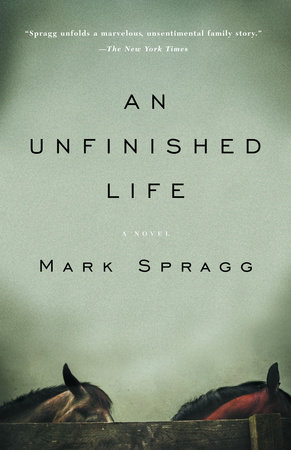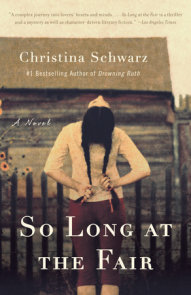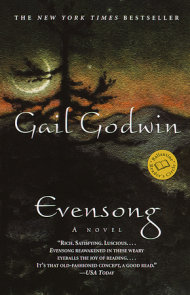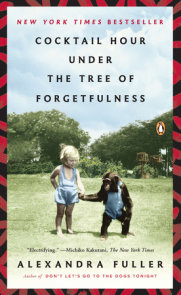READERS GUIDE
“Spragg unfolds a marvelous, unsentimental family story.” —The New York TimesThe introduction, discussion questions, suggested reading list, and author biography that follow are intended to enhance your group’s reading of Mark Spragg’s An Unfinished Life, a moving and memorable story about a family’s search for forgiveness.
Introduction
Jean Gilkyson works in a dry-cleaning shop and lives with her boyfriend, Roy, in his trailer in Iowa. Her ten-year-old daughter, Griff, has made her mother promise that the next time Roy beats up Jean they will leave him. So Griff is relieved when she and her mother finally drive away alone, determined to start a new life. When the car breaks down and the money runs out, Jean takes Griff to a place she’s never told her about before: her hometown in Wyoming. For years, Jean has been running away from the night when her young husband, Griffin, died in a car accident while she was driving. And for his part, Griffin’s father, Einar, has never forgiven Jean for the accident that took his son’s life. A widower, Einer is alone now except for his friend Mitch, and the two men, now old and without family ties, have become each other’s lifelines. When Jean and Griff arrive on his doorstep, Einar’s bitterness is heightened, but as he learns to love his granddaughter he is forced to come to terms with the destructive grief that he harbors. With grace and determination, and driven by the need to salvage her own young life, Griff unites these suffering adults in the hopes of creating two things she has never known—a real home and a stable family.Immediately compelling and constantly surprising, rich in character, landscape, and compassion, An Unfinished Life shows a novelist of extraordinary talents in the fullness of his powers.
Questions and Topics for Discussion
1. Near the opening of the novel Griff thinks, “Everybody’s mother is good at something. Her mother’s good at finding the same man, no matter where she lives” [p. 8]. How has Griff been affected by witnessing Jean’s abuse at the hands of her boyfriends?
2. What does Griff’s diary tell us about her feelings for her mother? What is good about their relationship? Which scenes indicate that Jean is a good mother? What does Griff admire about Jean?
3. How important are routines in the lives of Mitch and Einar? How is their humanity revealed in their daily activities? Does the novel suggest that it is routine that keeps them alive? How does the arrival of Jean and Griff alter these routines, and who benefits most from the changes?
4. How does the mood and tone of the novel change when the setting switches to Wyoming? What is the effect of Wyoming life and landscape on Griff?
5. As he massages Mitch’s shoulders, Einar “knows if he shuts his eyes he’d forget they weren’t the same man, that he wasn’t working the liniment into some scarred part of himself” [p. 21]. Why is the bond Einar feels with Mitch so profound?
6. How do details like Mitch’s dreams and his antler carvings illuminate aspects of his character? How is Mitch’s personality a counterpoint to Einar’s, particularly in their dealings with Griff?
7. When Starla, the sheriff’s receptionist, offers Jean a pistol, what stereotype of battered women does she reveal she believes in? How does Jean respond? What acts of bravery does Jean commit to create a better life for herself and Griff? How accurate is the novel’s depiction of domestic violence?
8. What is the significance of the bear in Mitch and Einar’s relationship? Why does Mitch want to set the bear free? Does the bear have a symbolic as well as literal presence in the novel? Why is the series of events involved in setting the bear free so important?
9. What does Jean’s return home reveal about her character? What do we learn of her relationship with Griffin? Why does she put her box of belongings back into the hole in the closet floor [p. 172]? What does it mean for her “to believe in chance as random as weather” [p. 172]?
10. The story proceeds at a quick pace, with some details about the characters’ pasts implied but not stated directly. For instance, how long ago was Mitch attacked by the bear? When did Einar start drinking heavily? What was Ella like, and how did she die? What other questions does the plot raise? Does it matter that these questions aren’t answered?
11. Which scenes and details best express the way Einar reacts to the realities of aging? How does he attempt to combat the aging of his body and for what reasons? Why has Spragg chosen an excerpt from Mark Strand’s poem “Not Dying” for the novel’s epigraph?
12. Describe the most admirable elements of Griff’s character. In which scenes does she seem indomitable, and in which scenes is she vulnerable and scared? In what way does Griff seem wiser than a typical ten-year-old, and how has she become that way?
13. How do power and control define Roy’s relationship with Jean? When is Roy most dangerous? If the novel can be said to have two dangerous antagonists, Roy and the bear, which—the human or the animal—is more threatening?
14. What characteristics did Einar value most in his son? In what ways does Griff remind him of Griffin? If Griffin’s life was “unfinished” [p. 43], as his father emphasized, does Griff represent a chance for its completion?
15. How does Jean’s guilt affect her life and relationships? How does Einar’s grief affect his life and relationships? What does the novel suggest about people’s need to hold on to their pain? How do Jean and Einar change over the
course of the novel?
16. Discuss the novel’s structure and narration. In what order is the story presented? From whose point(s) of view is the story told? With which character(s) does the reader become most intimately acquainted?
17. Describe Mark Spragg’s writing style. Is there a relationship between his style and the emotional impact of the story?






















